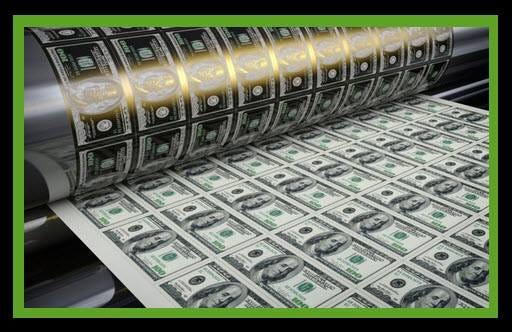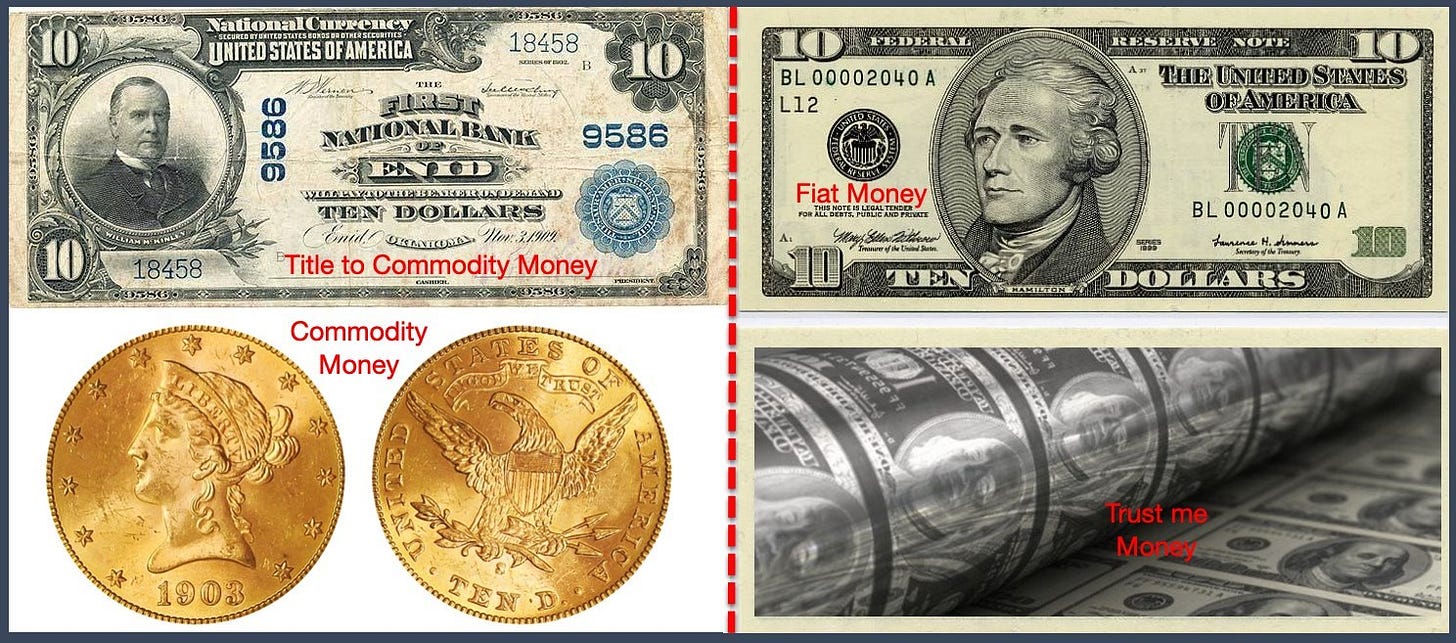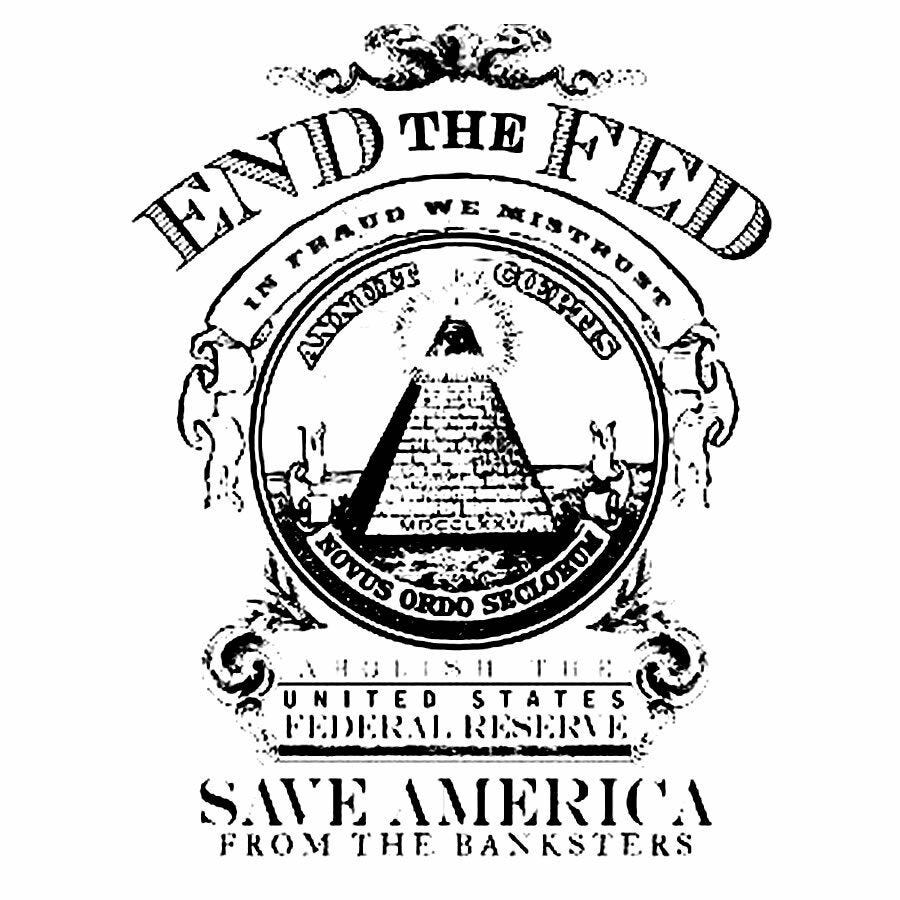Here is a social media article I wrote back in March 27, 2016.
The U.S. Treasury prints money without basis, but always when the Federal Reserve directs the influx of additional cash dollars to the central banks. This process is called quantitative easing, or QE. QE is defined as the introduction of new money into the money supply by a central bank. QE is being used to keep interest rates low in order to prevent the U.S. Government from going bankrupt while paying interest on the debt.
"Interest payments are also poised to rise, both because of an expected rise in interest rates from the recent historic lows and because of a rising government debt, which the CBO said would hit 100 percent of GDP in 25 years. The interest payments alone are expected to hit $227 billion this year, more than double to $480 billion by 2019, and more than triple to $722 billion by 2024." -- https://www.washingtonpost.com/.../cbo-interest-on.../
This is a neat trick used by Keynesian economists at the Federal Reserve. Controlling interest rates through flooding the banking system with new dollars also inflates the currency base, which makes the true purchasing power of the dollar worth less over time as the market cycles adjust to the increase in supply.
The final assault on the U.S. Dollar was led by Richard Nixon in 1971 when he took the Federal Reserve off the Gold Standard. At that time, the average cost of a home was $28,300.00, or 808 ounces of gold at $35.00 per ounce ($1,066,560.00 in 2016 U.S. Dollars). In March 2016, the average cost of a U.S. home was $186,000.00, or 141 ounces of gold at $1,320.00 per ounce ($4,935.00 in 1971 U.S. Dollars).
Over that time period, the U.S. paper (fiat) dollar has been inflated by 3,770%, and given this adjustment for the inflation of the dollar, the cost of a home in the U.S. has increased an additional 660%. This real but unseen theft of middle and working-class Americans has been used to build up record profits in the U.S. central banking system. Yes, the same banks that were bailed out while we were being told they were too big to fail without bringing down the U.S. and world economies.
I still don't understand why the U.S. Federal Reserve Bank is not a federal agency but can direct actions of the U.S. Treasury. This QE trick creates an inflationary bubble in the money supply, and all bubbles always burst, which is why no country has ever printed its way out of debt.
Nearly a decade has passed since I first penned these thoughts, and the story of the U.S. dollar’s erosion and the corresponding rise in gold and housing costs has only grown more stark. As of March 2025, the inflationary pressures unleashed by decades of monetary policy, including repeated rounds of quantitative easing, have continued to reshape the American economic landscape. The figures from 2016, alarming as they were, now seem almost quaint when viewed through the lens of today’s reality.
Let’s start with gold. In March 2016, an ounce of gold cost $1,320.00, a price that already reflected significant inflation since the Nixon era. By March 13, 2025, that same ounce has soared to approximately $2,900.00, according to trading data tracking the benchmark market for this commodity. This represents a 120% increase over the past nine years, or roughly 13.3% annually a staggering climb driven by a mix of geopolitical uncertainty, central bank buying, and persistent inflation fears. If we revisit 1971, when gold was $35.00 per ounce, the 2025 price reflects an inflation of over 8,185% in nominal terms. Adjusted to 1971 dollars, today’s $2,900.00 per ounce equates to roughly $85.00 in purchasing power from that era—a testament to how much the dollar has withered.
Now, consider the cost of a home. In 2016, the average U.S. home price stood at $186,000.00, or 141 ounces of gold at the then-current price. Fast forward to March 2025, and the average home price has ballooned to approximately $420,000.00, based on the latest housing market data reflecting persistent growth despite periodic slowdowns. That’s a 126% increase since 2016, outpacing even gold’s rise. In terms of gold, $420,000.00 today translates to about 145 ounces at $2,900.00 per ounce—remarkably close to the 141 ounces from 2016, suggesting that gold has retained its role as a yardstick of real value while the dollar continues to falter. Compared to 1971, when a home cost 808 ounces of gold ($28,300.00), the 2025 home price in gold terms has dropped dramatically, underscoring how housing costs have outstripped even gold’s inflationary surge when measured in raw ounces.
The broader implications of these shifts are chilling. From 1971 to 2025, the fiat dollar’s inflation, as measured against gold, has now reached an astonishing 8,185%, dwarfing the 3,770% I calculated through 2016. Meanwhile, the real cost of a home, adjusted for this dollar inflation, has surged by an additional 1,383% since 1971—more than double the 660% increase I noted nine years ago. This escalation reflects not just monetary policy but also supply constraints, speculative investment, and a housing market increasingly detached from middle-class affordability. The unseen theft I decried in 2016 has only deepened, siphoning wealth from working Americans into the hands of financial elites and central banks, which continue to profit from this system.
Somewhere between Nixon’s 1971 decision and today’s spiraling prices lies a fundamental shift in what we call money. Commodity money, like the gold-backed dollars of old, derives its worth from something tangible—gold, silver, or another physical asset with intrinsic value, traded for millennia as a universal store of wealth. Back then, a dollar was a promise, redeemable for a fixed amount of gold, tethering its value to something real and finite. Fiat money, by contrast, is a creation of trust and decree, backed not by metal but by the government’s word and the Federal Reserve’s whims. Since abandoning the Gold Standard, the U.S. dollar has become pure fiat—a paper IOU with no inherent worth, its value dictated by supply, demand, and the central bank’s printing press. This unmooring, I’d argue, is the root of our inflationary woes: where commodity money imposes discipline through scarcity, fiat money invites excess, diluting the dollar’s purchasing power as trillions flood the system unchecked.
The fiat saga didn’t begin with Nixon, it was Franklin D. Roosevelt who first set the stage, robbing Americans of their gold in 1933 with a stroke of his pen. Under Executive Order 6102, FDR outlawed private gold ownership, forcing citizens to surrender their coins, bullion, and certificates to the government at a paltry $20.67 per ounce only to watch the price jump to $35.00 once the hoard was secured, a tidy profit for Uncle Sam. This wasn’t just a seizure; it was a betrayal, stripping people of a tangible asset they’d trusted as a bulwark against economic chaos, all to prop up a faltering banking system and pave the way for a dollar untethered from gold’s discipline. By hoarding the nation’s gold and devaluing the currency in one fell swoop, FDR handed the Federal Reserve the keys to an inflationary engine that’s been running ever since, leaving citizens with paper promises while the real wealth slipped through their fingers.
Quantitative easing, once a novel tool, has become a fixture of Federal Reserve policy, with rounds implemented during the 2020 pandemic and beyond adding trillions to the money supply. While it staved off immediate collapse, the long-term cost is now undeniable: inflation that erodes savings, wages, and dreams of homeownership. As of 2025, the Congressional Budget Office’s warnings from 2016 have proven prescient—government debt has indeed approached 100% of GDP, and interest payments are projected to exceed $1 trillion annually by the end of this decade if trends hold. The bubble I warned of has not yet burst, but its fragility is palpable.
I still grapple with the same question: why does the Federal Reserve, a private entity in all but name, wield such unchecked power over the Treasury and, by extension, our lives? The past nine years have offered no satisfying answer, only more evidence of a system rigged against the average citizen. Gold’s rise and housing’s unattainability are not mere market trends, they are symptoms of a dollar unmoored, a currency whose value is dictated not by tangible wealth but by the whims of policymakers. History whispers a warning: no nation has printed its way to prosperity. As we stand in 2025, that truth feels closer than ever.
Your friend in Liberty, Marven Goodman














